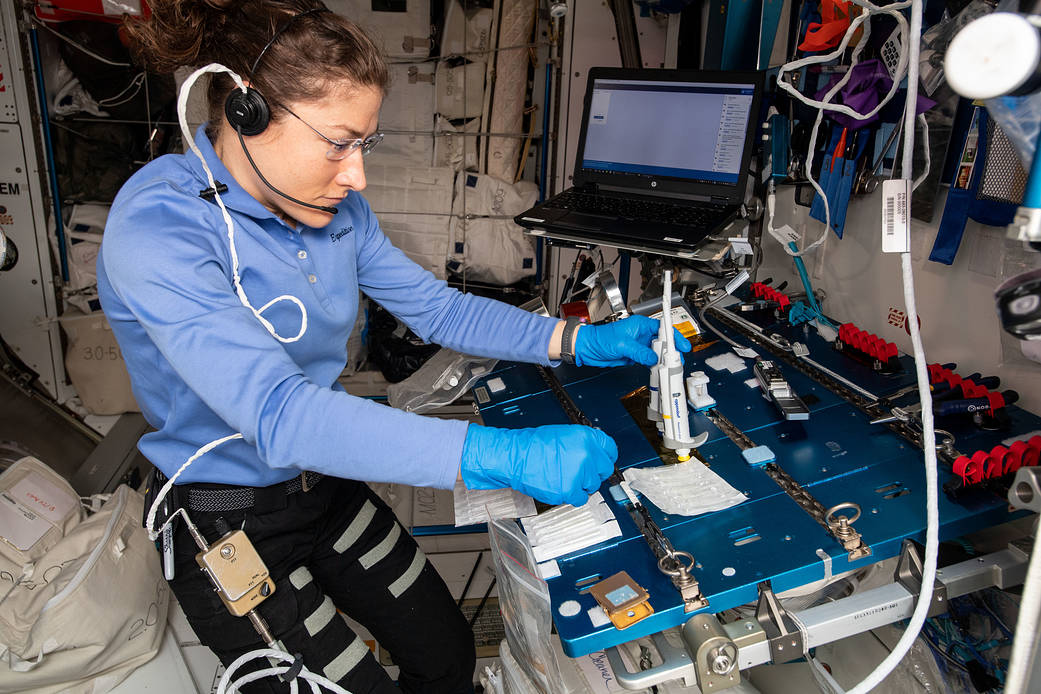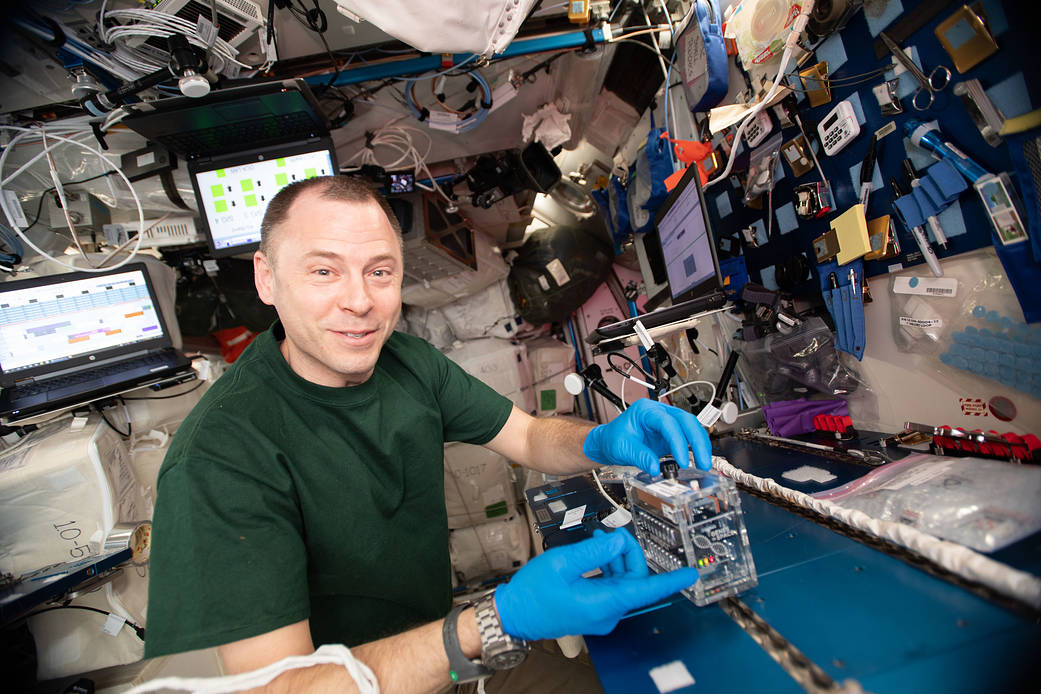Astronauts successfully demonstrate DNA repair in space using CRISPR technology

The first CRISPR experiment to take place in space shows that DNA can repair itself in microgravity.
As part of the "Genes In Space-6" experiment, astronauts on board the International Space Station (ISS) created breaks in the DNA of a common yeast, and then analyzed how it repaired itself.
During the investigation, the yeast's DNA was cut across both strands to create significant damage. In a recent paper published in the journal PLOS One, researchers explained how the DNA was restored to its original order.
The introduction of CRISPR in space and the first successful genome manipulation on the ISS extends the possibilities for future DNA repair experiments, researchers said.
Related: NASA wants to change the way it protects astronauts from radiation
Genes In Space-6 was proposed by four Minnesota students as part of a national contest in 2018 that challenged kids in grades seven through 12 to design a DNA analysis experiment. Aarthi Vijayakumar, Michelle Sung, Rebecca Li and David Li designed the experiment as they thought about the increased risk of cancer in astronauts.
The increased exposure to radiation in space has the potential to damage the DNA of humans. On Earth, the body can repair double-strand breaks by adding and deleting DNA bases, or re-joining the two pieces without altering them. Before the Genes In Space-6 experiment, however, these processes had not been studied in microgravity.
Breaking space news, the latest updates on rocket launches, skywatching events and more!
"Understanding whether one type of repair is less error-prone has important implications," study co-author Sarah Wallace, a microbiologist at NASA's Johnson Space Center (JSC) in Houston, said in a statement. (The four Minnesota students are co-authors as well.)
Such knowledge could be beneficial to astronauts — for example, by helping mission planners determine whether more radiation shielding is required. According to Wallace, it's "important to gain this understanding to help ensure that we are protecting the crew and helping them recover in the best possible way."
CRISPR stands for "Clustered Regularly Interspaced Short Palindromic Repeats" and is a genome editing tool used to create breaks in specific areas of DNA. This technology uses proteins in bacteria called Cas proteins. To control where these proteins cut DNA, scientists add a specific strand of RNA to a Cas protein and insert this into a cell.
Using the RNA as a guide, this protein will travel along the DNA strands until it finds the corresponding sequence and makes its cut. On Earth, this advanced method has been used to edit the genes of plants, animals and human cells in the medical sector. Now that CRISPR tech has been delivered to the ISS, its capabilities have been extended.
Having this technology available on the ISS means that scientists can analyze DNA that sustained damage while in space, rather than relying on samples being sent up to the station that have been cut on Earth. While the principles of CRISPR in space are the same, they need to be tailored toward the conditions in space, researchers said.
"We cannot take exactly what we have on Earth and simply put it in space, because we have to keep the crew and all the environmental life systems on board safe," study lead author Sarah Rommel, also a microbiologist at JSC, said in the same statement. "For example, we made our own custom kits for the whole process, looking at how to use the least amount of the safest materials and still get the best science."
"We validated that it is not too complicated to do in space," Rommel added. "It worked as it was intended, and it did what it was supposed to do."
Wallace believes that more work is needed to fully understand the repair process of DNA in space but stressed that the Genes In Space-6 experiment was a success. Looking to the future, she said, "having an entire molecular laboratory in space is just going to explode what we can do there."
You can follow Ailsa Harvey on Twitter at @ailsaharvey. Follow us on Twitter @Spacedotcom and on Facebook.

Ailsa is a staff writer for How It Works magazine, where she writes science, technology, space, history and environment features. Based in the U.K., she graduated from the University of Stirling with a BA (Hons) journalism degree. Previously, Ailsa has written for Cardiff Times magazine, Psychology Now and numerous science bookazines.

